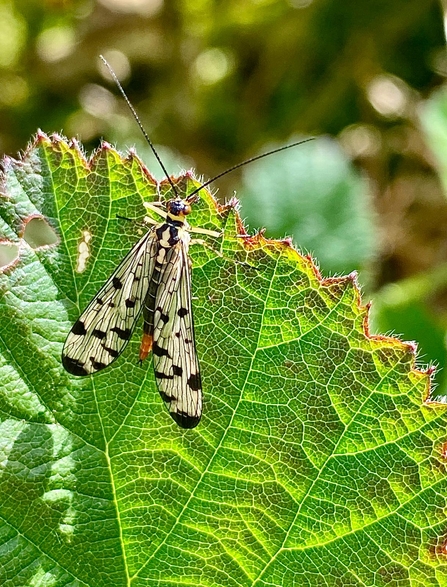The scorpion fly is a fascinating-looking insect. It is around 3cm in length, and has a long, beak-like projection from its head which is uses to feed, typically on scavenged, dead insects, including stolen contents from spiders’ webs. It is typically found in gardens and hedgerows, and along woodland edges, particularly among stinging nettles and bramble.
With a scorpion-like tail, it is not hard to imagine where the scorpion fly got its name from. The curled-up tail is used by the males in courtship displays. If the tail wagging is successful, the loved-up scorpion flies will usually mate after dark. However, this affection is only stretched so thin as the mating process is a dangerous game for the male, often resulting in its death. To improve his chances of survival, the male scorpion fly will present the female with a gift, usually a dead insect or a mass of saliva will be enough to placate her: the insect equivalent of a box of chocolates.


